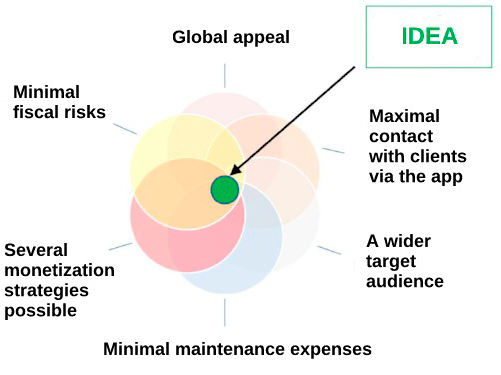
![escape-room1[1] ar magic portal](https://invisible.toys/wp-content/uploads/2018/01/escape-room11-1920x500.jpg)

The idea of traveling through portals has captivated people since time immemorial. Before doors, cave entrances were portals separating people from the unknown and, perhaps, dangerous world. Centuries later, only destinations have changed—as the mind expanded, so, too, the destinations. People keep dreaming of traveling to another planet, another time or dimension just by stepping through a magic door, the entrance to a portal. Until now, it only seemed possible on the pages of fantasy books—for most of us, that is.
With AR, these magic doors are ubiquitous—everyone can see them on almost every street in their hometown. How is this possible? A developer from Helsinki, using the nickname lingoded, posted a video on Twitter showing the concept of an Augmented Reality portal game using ARKit and Unity.
The door appears in a specific place on an iPhone screen. In order to step through, a player must find a key. To go through the next portal, another specific item must be found, and so on. Check out the video from lingoded’s Twitter account announcing an AR game by General studio, the company lingoded works at:
The door appears in a specific place on an iPhone screen. In order to step through, a player must find a key. To go through the next portal, another specific item must be found, and so on.

Many quest games based on the world or fantasy—for example, The Chronicles of Narnia, Doctor Who, and anime worlds—can become an AR game. Most of the quest games usually have a mode switch, from digital to augmented reality, just as Pokémon video games evolved to Pokémon Go. Alternatively, producers can start a new parallel world as a cartoon or a movie with an AR game as its basis from the very beginning in order to engage a wider audience.
– Global appeal. One mobile app can be used by clients all over the world and work without the need to build or rent escape rooms, as is required for VR games.
– Minimal fiscal risks. While using MVP development, startups can minimize fiscal risks and attract customers’ attention. Later, after their idea has caught on, they can add features welcomed by their core audience.
– Maximal contact with clients via the app. After installing the app, the product owner gains presence on users’ smartphones. Via push messages, the users receive tips, interesting facts, and news. The app becomes part of the users “new reality”: it gets noticed and noted.
– Several monetization strategies possible. Users can watch ads (but not during crucial episodes!), purchase extra items or health points, unlock premium features, and much more.
– Minimal maintenance expenses. Product owners do not have to keep a large team of workers; one team of developers is sufficient to update the app and maintain seamless functioning.
– A wider target audience. For different ages, there can be different tasks or challenges based on the level of difficulty and graphic representation. The need for myriad demographic parameters is not important: it is sufficient that they love the world of fantasy.

AR mobile games make more sense for children than traditional video games for the following reasons:
– Health. Children play door portal games outside in the fresh air. They have to run to complete the task faster. Fresh air, sunshine, and running are all beneficial for health.
– Development of imagination. A child’s imagination develops with the help of augmented reality. One way is by solving logical tasks. Another way—and very importantly—AR keeps the child’s mind receptive to thinking “outside” the box. We all know that school too often dampens a child’s vivid imagination: AR keeps that very important door open. Also, children with more developed imaginations have higher IQs.
– Safety and security. When children use smartphones while playing, parents can track their children’s whereabouts using GPS. Parents feel secure knowing where their children are and that they are safe.
– Friendship / necessary social skills. Children must, at times, team up with others to solve complicated tasks. A common cause unites children. Developing social skills is essential to survive in today’s society.
Augmented Reality is the present and future of portal games. Stepping through an AR portal and entering a quest room is far less expensive and less physically extreme than a VR escape room—and certainly a lot more fun than living with no portal to enter the wonderful world of one’s imagination.
First ones to develop this new dimension are the winners!
I want to be one of the first developing this new dimension!
Leave a Reply